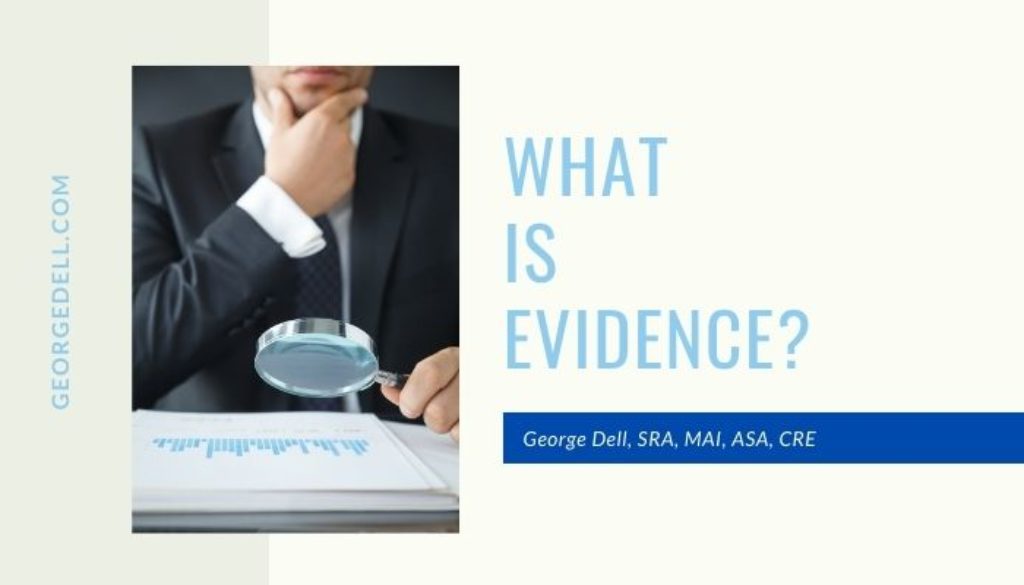Evidence is a necessary part of any research or analysis.
In a prior blog, we considered that it was a core part of EBV (Evidence Based Valuation©). We noted three basic types (or ‘support’ for a personal opinion). We have logical – “if A, then B must follow”. We have empirical – “If A, then probably B” (with some uncertainty). And we have anecdotal – personal experience (brief stories or happenings).
Evidence is important to the law. Generally, this entails a full course in evidence, and is one of the basic topics of the bar examination. Some evidence is direct and speaks for itself. Circumstantial evidence suggests by implication or inference.
Facts can be proven or disproven with four classes of evidence: real, demonstrative, documentary, and testimonial. They carry different weight, a job for the jury. In future blogs, we will look deeper into the different types and their relevance, and how they might relate to asset assessment.
Scientific evidence helps to support or counter a theory or hypothesis. It is expected to be empirical – based on observation and measurement. Also, it is expected to follow the basic ‘rules’ of the scientific method. This usually entails models and algorithms based on controls or ‘moderation.’ One principle is that a person’s personal preference and prejudices can and will affect conclusions.
Analytics, such as appraisal or risk assessment requires an understanding of a first principle: facts or data alone do not constitute evidence.
It is important to understand the difference between data and evidence. Context is everything and impels the art of science. There are two ways in which art inserts itself into appraisal, analysis, and data science:
- The formulation of the question, problem, or ‘hypothesis’ of the assignment.
- The placement of the data in its proper context
A cornerstone of EBV is the ability to delineate data to evidence. Some data is evidence. Some is not. If anything, this single issue truly is the basis of EBV, as compared to vintage “valuation process”.
On an organizational level, such as our professional associations, regulators, and major clients, the difference between data and evidence is the key to a productive entity and public trust. Old thinking fits old ways. New thinking fits today’s data complexities and computational speed. New thinking optimizes appraiser competence. It builds on expert knowledge and experience for better, much better results.
It’s a matter of how you think about data. Those appraisers and analysts who have embraced the importance of today’s “big data” problems and opportunities – have discovered that once the data is properly organized, the analysis is straightforward and clear.
We will delve deeper into this issue and how it affects asset, risk, and forecasting analytics in coming issues of this blog. It is also an in-depth topic of an upcoming TAAR (The Asset Analyst Report) – our paid subscription Asset Analyst© professional journal.
